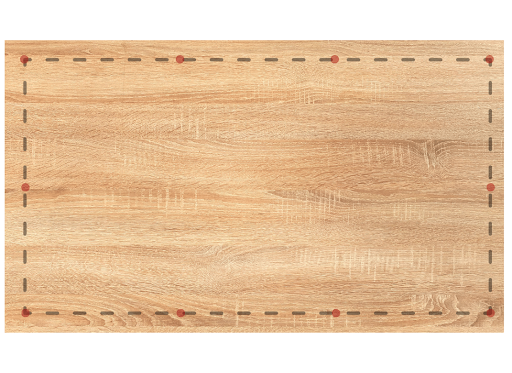DIY Guide: How To Board up Windows Before a Storm

Storm season can be a nightmare for coastal homeowners. The severe conditions of tropical storms and hurricanes bring the threat of damage to homes and danger to civilians. If you live in a storm-prone area, you must act to safeguard your home against treacherous weather conditions. One of the most effective ways to protect your home is by boarding up your windows.
Boarding up your windows before a storm hits is a crucial step in protecting your home and family. High winds, rain, and flying debris can cause significant damage if your windows are left exposed. Traditional hurricane shutters offer great protection, but if your home isn’t equipped with them, you can create makeshift shutters with a few common tools and materials.
Knowing when to board up your windows is important to give you enough time to prepare before the storm arrives. Safety should always be a top priority when boarding up your windows. A clear plan considers all necessary precautions to avoid injuries. Understanding the tools and materials needed, such as plywood, screws, and a power drill, will help you complete the job effectively.
In this article, I’ll walk you through the entire process, from gathering your materials to safely securing your window coverings. I’ll cover when you should start boarding up your windows, the best safety practices to follow, and the steps to protect your windows. This will enable you to be well-equipped to withstand the devastating effects of a storm.
When to Board up Your Windows
The timing of boarding up your windows is important and can make a big difference when protecting your home. When a storm watch is issued, you should start the process. This gives you time to prepare, gather the materials you need, and secure your home without any pressure. Weather conditions can change quickly, which makes waiting until the last minute to prepare risky. You do not want to be outside during dangerous weather conditions.
Carefully listen to all weather updates and make sure you follow guidelines issued by local authorities. If you begin preparing when a watch is issued, you should have your windows nearly boarded up by the time a storm warning is declared.
It’s better to be careful and board up sooner rather than later. Preparation is key to minimizing damage and keeping your home and family safe. Acting early not only helps protect your property but also gives you peace of mind knowing you’ve done everything possible to safeguard your home from the impending storm.
Safety Considerations
When boarding up your windows before a storm, safety is a top priority. Take these steps to keep your property and your family safe.
Wear protective gear:
- Sturdy gloves to protect your hands from splinters and sharp edges.
- Safety goggles to shield your eyes from flying debris.
Get help:
- Have someone assist with lifting and holding heavy sheets of plywood.
- Make sure the ladder is stable and have someone hold it steady to prevent falls.
Use power tools safely:
- Wear proper protective gear when using drills and saws.
- Follow power tool safety protocols and take your time.
Monitor weather conditions:
- Pause and wait for better conditions if the wind picks up or it starts to rain.
Stay away from windows during the storm:
- Even after boarding up, keep a safe distance as plywood doesn’t guarantee complete safety.
Tools and Materials Needed for DIY Storm Shutters
Check out the lists below for the tools and materials you’ll need. You might have a few of these items already on hand. If not, you’ll easily find them for rental or purchase at a local home improvement store.
Tools:
- Tape measure
- Circular saw
- Power drill
- Drill bits
Materials:
- Exterior-grade ⅝-inch plywood boards
- Lag screws
- Washers
- Wood sealer
- Paint roller
5 Steps To Boarding Windows With Plywood
Now that you know the tools and materials you’ll need to protect your home, I’ll discuss the step-by-step instructions for installing DIY plywood storm shutters. These tips and tricks will give you peace of mind when the next disaster strikes.
Step 1: Measure the Window Frames
The first step is counting and measuring your home’s exterior windows. Measure the windows from top to bottom and side to side, noting each measurement as you go. You want your panels to overlap the windows by a few inches. Add 10 inches to the height and width measurements to account for five inches of extra coverage on each side. If your window has a protruding bottom sill, add only five inches to the height measurement.
Buy enough pieces of plywood to cover your exterior windows and measurement needs. If you need bigger panels to cover large windows or exterior doors, you can connect two boards for complete coverage. Connect the plywood panels by drilling them to a two-by-four at the joints. Fasten the panels to the adjoining board with screws placed at 4-inch intervals. Add additional screws if the panels feel wobbly.
Step 2: Cut the Plywood Panels
Use a circular saw to cut the plywood to size. If you don’t own this power tool, you can rent one from Home Depot. Before you begin cutting, make sure you’ve reviewed saw safety tips and general use instructions.
This video explains the basics of using a circular saw:
After cutting your plywood panels to size, use a permanent marker to label each one according to the window it will occupy. Using simple notations like “kitchen,” “guest bathroom,” and “kids’ bedroom” will simplify the first installation process, as well as any reinstallations needed for future storms.
Step 3: Seal the Wood
Once your boards are cut to size, it’s time to turn them into stormproof shields for your windows. Applying an exterior-grade polyurethane sealant is the best way to make sure your DIY storm shutters can withstand the rain. This step also helps the sheets of plywood last longer so you can use them again in the future.
I suggest using a product like Helmsman Spar Urethane, which is suited for interior and exterior use. This clear gloss sealant will protect your panels from UV rays, moisture damage, and temperature fluctuations for durable, long-lasting protection.
Paint the sealant onto your plywood panels with a paint roller and allow it to dry. If you have time, apply a second coat for the best results.
Step 4: Mark Drill Holes on Panels and Window Framing
Now it’s time to mark your boards for drilling. Draw a line around the perimeter of each board, 1.5 inches from the edge of the panel. Make small marks at 12-inch intervals along the line, all the way around the panel.

Next, use a stud finder to locate the window studs on aluminum, vinyl, or wood-framed houses. For stucco homes, you’ll find the stud on the home’s interior wall and transfer that measurement to the exterior. Once you’ve located the studs, mark the spots for pilot holes on your panels so they’ll hit the center of the stud.
Step 5: Attach the Panels to the Window Frame
For the final step you need your power drill and screws.
Drill pilot holes through the marks you made on the panels. Then, hold the board up to the window frame and screw in each corner. Have your helper assist with the panels.
I suggest using lag screws for this project. Lag screws are durable fasteners designed to connect heavy materials under intense pressure. This design is vital in holding up against the strong winds and beating rains of severe storms. No matter what type of screw you use, select one with a corrosion-resistant design. This will keep the fasteners in good shape for years, even after exposure to the elements.
Drill through the holes in the panels to create pilot holes in the exterior wall. If your home has concrete siding, you’ll need a masonry drill bit to complete this step.
Next, work around the panel, screwing a lag bolt into each pilot hole until the panel is securely fastened over the window. If you’re worried about damaging your home’s siding, slip a metal washer onto the screw before drilling it in.
That’s it — you’ve installed DIY storm shutters to protect your home from dangerous weather. Once the danger has passed, you can remove the screws and panels from the window and fill the holes with wood sealant/caulk.
For windows that are more likely to hold up to rough weather, read about hurricane window costs.
How to Board up Windows Using Plywood and Window Clips
If you don’t have the time or resources to board up windows with screws, you can still protect your home with window tension clips. Tension clips secure plywood panels in recessed window casings without drilling or screws. They’re reusable, easy to install, and compatible with stucco, brick, and wood homes. Unfortunately, clips aren’t suited for homes with vinyl siding.
Follow the instructions below to board up your windows with plywood and tension clips:
- Measure each window casing from top to bottom and side to side, subtracting a quarter inch from both measurements. If you need help choosing the right plywood panel sizes, take your measurements to a home improvement store for help from a pro.
- Label each sheet of plywood according to the window it covers.
- Apply exterior-grade polyurethane sealant for water resistance and durability.
- Hammer the tension clips onto the edges of the plywood at 12- to 24-inch intervals, making sure the tension legs are facing outward.
- Push the panels into the window frame and check for security.
- Remove the panels after the storm by pushing in on the panel with one hand and pulling each clip outward with the other hand.
- Store your clips together for easy access next time you need them.
Final Thoughts
It’s wise to have a hurricane preparation guide when preparing for storm season. Learning how to board up your windows before this hurricane season keeps your home and family save from severe weather. As a homeowner, you now know when to start the process, use the right materials, and follow safety protocols. Your DIY shutters will be both effective and secure following the proper steps. Take time when building your shutters to measure correctly, cut precisely, and seal properly to provide you with the protection you need.
Remember, safety is key throughout the process. Don’t neglect to ask for help, use the right tools, and keep an eye on weather conditions when installing your boards. Once the storm has passed, you can easily remove the boards and clean up any residual damage.
By following these steps, you not only protect your property but also gain peace of mind knowing you’ve done everything possible to shield your home from the elements.
Frequently Asked Questions
How thick should plywood be for hurricane protection?
For hurricane protection, use plywood that’s at least 5/8 inch thick. Thinner plywood may not withstand high winds and flying debris as effectively.
Is it a good idea to board up windows for a hurricane?
Yes, boarding up windows is a smart way to shield your home from hurricane damage, especially in areas under a hurricane watch or warning. It helps protect against flying debris and wind damage, though it may not eliminate all risks.
When should I board up my windows?
You should begin boarding up your windows when a storm watch is issued.






Leave a Reply